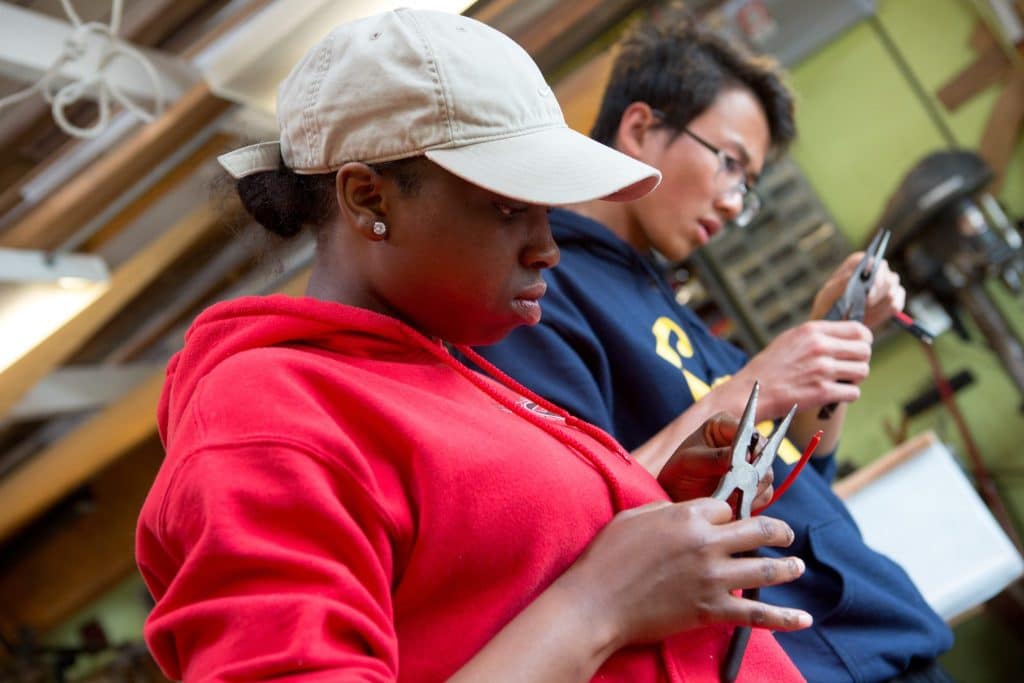The Quiet Revolution in Education: Building a More Effective, Personalized, Future-Focused Education System in Kentucky
Education Domain Blog
The stories we hear these days about education are largely focused either on the culture wars–what gets to be taught and what doesn’t–or how far students are “behind” in learning after nearly three pandemic school years. These stories are important, but what gets lost is the quiet revolution taking place across the nation–including in Kentucky–to modernize education for the future.
Traditional schools are often run like factories: one teacher, one textbook, one subject, one hour. When the bell rings, learners rotate and repeat. Advancing to the next grade or reaching graduation is determined by the number of hours spent in a classroom and “passing” assessments and coursework. Students don’t have much say in their paths. The system works well for a privileged few, while under-serving many, and rates of college and career success are unsurprisingly split along class, race, and geographic lines. If we want to keep up with an ever changing, interdependent global economy, K-12 systems must change.
What if students advanced after they demonstrated mastery of a given topic, rather than being forced to move on, or being held back while others are still learning?
What if we challenged the master schedule and encouraged learning to happen anytime and anywhere?
What if learning is valued both inside and outside the classroom with real, meaningful projects and community partnerships?
What if students could select rigorous, mastery-based personalized learning pathways based on their passions?
What if students earned credits toward graduation through portfolios of work, performances, and knowledge and skills learned during paid internships?

These approaches are part of what is often called competency-based education. Kentucky has been moving in this direction since the mid-1990s, when innovative districts developed projects and performance assessments. In 2012, the state launched districts of innovation–allowing districts more flexibility to advance innovations, and exempting them from certain outdated administrative regulations and statutory policies. This shifted the role of the state agency from compliance enforcement to innovation catalyst and obstacle remover, enabling innovative learning programs in schools and systems. Using state policy flexibility, districts have provided more flexible learning environments inside and outside of traditional classrooms. And in 2018, a legislative update allowed single schools and/or groups of schools to apply for innovation status.
Additional examples of rethinking when, where, and how learning happens are apparent across the state. Eminence Independent School District encourages students to learn through personalized projects aligned with their interests. They offer dual enrollment, where high school students take college classes at nearby Bellarmine University and earn college credits. As of 2022, over 200 students have participated in these new pathways– a sneak peek at college life and building confidence. Studying outside their high school campus, in their community, and getting real-world experiences helps them advance toward graduation and beyond.
Shelby County Public Schools has been transitioning to competency-based education for more than a decade. Students set goals, make daily decisions about their learning, receive regular feedback, work independently on authentic projects, exhibit their understanding through real-world experiences, and progress when they’re ready – all with coaching from teachers to help them develop skills for life-long learning.
The opportunity gaps between privileged and typically overlooked students are not new. But we must shift education away from its focus on fixed time and place, to prioritize advancing student learning, regardless of where it happens and how long each student needs to learn successfully. This means rethinking restrictive policies, using appropriate advanced technologies and tools, and putting the new learning designs in place before the next pandemic or crisis. We need to modernize education systems first.
Thankfully Kentucky has been doing the work to provide all kids more future-oriented learning experiences to prepare them for our rapidly changing world. We must continue to push for this sort of innovation across the state and the nation to ensure a more prosperous future for all of us.
Susan Patrick is the President and CEO of the Aurora Institute
Charles Reigeluth is a professor emeritus at Indiana University-Bloomington’s Instructional Systems Technology department, and consults on education systems change